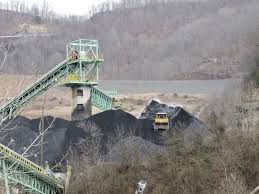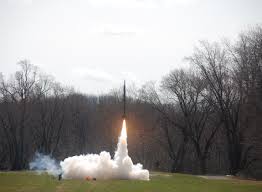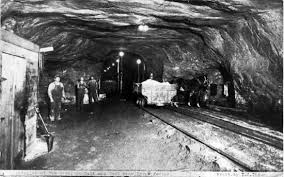Appalachia Project: Rocket Boys (October Sky), 1998
Rocket Boys, by Homer H. Hickam, Jr.
 |
| Homer now |
Rocket Boys is one sweet read. It is poignant, historical, funny, and honest. Hickam presents a slice of his life--from 1957 to 1962 or so--in a nonfiction autobiography covering the years he was a part of the Big Creek Missile Agency (BCMA).
Big Creek Missile Agency
The action starts with the launch of Sputnik, an event that astounded the world and horrified Americans. All of a sudden there was a race into space and the Russians had already won it. America went rocket mad, beefing up science curricula in high schools and pouring funding into the Army Ballistic Missile Agency (ABMA) in Florida, ABMA was run by Hickam's idol, Werner von Braun. Homer caught the rocket mania, wanted to be part of getting to space. His dream was to work for Werner von Braun and to get there he decided he would have to learn everything he could about rockets.
 |
| Homer then |
That's how Homer and his friends became the Rocket Boys. "Go get 'em, Rocket Boys," the men on the porch of the company store would call out. The book details the boys' process of building and experimenting with rockets. Homer's friend Quentin insisted on accurate note taking and on the radical (to most of the boys) idea that only one variable should be changed at a time, introducing the scientific method of hypothesizing and testing.
So often I've seen science books try to teach the "steps" of the scientific method in the abstract or through facile analogies. The Rocket Boys reached out intuitively to the process, recognizing its rightness, the necessity of rigor if they were to do anything beyond just blowing stuff up. Blowing stuff up would be fun in itself, but it wouldn't get them any closer to von Braun (although von Braun was blowing up rockets with some frequency himself). The boys knew from reading the newspaper that von Braun considered each failure a huge source of information and they also took that path.
Big Creek Mine
 The Big Creek Coal Mine and the town it supported (owned) functions as a character in this book, the soft-coal underbelly, with its own breathing system (ventilation fans) and veins (of coal) and arteries (of tunnels). The mine is omnipresent, the center of everyone's life in Homer's town of Coalwood, West Virginia. Homer's father, Homer Senior, is the superintendent of the mine, which is good, because the mine and its machinists, tools, and materials make Homer's rockets possible. Homer's family lived about 100 yards from the big coal tipple.
The Big Creek Coal Mine and the town it supported (owned) functions as a character in this book, the soft-coal underbelly, with its own breathing system (ventilation fans) and veins (of coal) and arteries (of tunnels). The mine is omnipresent, the center of everyone's life in Homer's town of Coalwood, West Virginia. Homer's father, Homer Senior, is the superintendent of the mine, which is good, because the mine and its machinists, tools, and materials make Homer's rockets possible. Homer's family lived about 100 yards from the big coal tipple.
To Homer's mom, the mine was death. To Homer's dad, it was life. This conflict is central to the book. Homer's dad works underground; Homer wants to work in the sky, in space. Homer is a disappointment to his dad--he can't play football. Homer's relationship with his dad undermines (mines) his confidence but also galvanizes his struggle to succeed.
 Hickam describes Coalwood and the surrounding area beautifully. When he goes to Indianapolis for a science fair, he feels lost, exposed, naked--then realizes how much the West Virginia hills have shaped his world, his life. Coalwood is a traditional company town. Even as the coal industry boomed in the 1950s and 1960s, Hickam could see how fragile the system was, dependent on this one finite product. Union disputes, mining accidents, the fringe of impoverished zones where people fired from the mine (and thereby kicked out of their company homes) squatted in shacks and made money from prostitution and moonshine--these were part of the fabric of Homer's life.
Hickam describes Coalwood and the surrounding area beautifully. When he goes to Indianapolis for a science fair, he feels lost, exposed, naked--then realizes how much the West Virginia hills have shaped his world, his life. Coalwood is a traditional company town. Even as the coal industry boomed in the 1950s and 1960s, Hickam could see how fragile the system was, dependent on this one finite product. Union disputes, mining accidents, the fringe of impoverished zones where people fired from the mine (and thereby kicked out of their company homes) squatted in shacks and made money from prostitution and moonshine--these were part of the fabric of Homer's life.
The Teachers
 Another key factor for the Rocket Boys was a committed group of teachers who took seriously the mandate to strengthen science education. The elementary school was run by a group of six teachers who made sure every student had a good start. The school was started by the first owner of the coal company who was a bit of social progressive. One high school teacher in particular, Miss Riley, took an interest in Homer and his project. Even while ill, she attended the final big blast of the BCMA.
Another key factor for the Rocket Boys was a committed group of teachers who took seriously the mandate to strengthen science education. The elementary school was run by a group of six teachers who made sure every student had a good start. The school was started by the first owner of the coal company who was a bit of social progressive. One high school teacher in particular, Miss Riley, took an interest in Homer and his project. Even while ill, she attended the final big blast of the BCMA.
The plot of this book is no mystery--the movie made from it, October Sky, is readily available and many of us in Appalachian areas have kept it alive. The adventure of the Rocket Boys and their successes and failures was captivating. The personal story of Homer coming through adolescence is touching and truthful. The portrayal of a forgotten way of life is rich.
 Rocket Boys captured my interest in the same way that the club captured the interest and imagination of their whole town. It took a whole community to get the project off the launchpad and to help the boys bring home the gold medal at a national science fair. The final big blast is the fruition of the book, a beautifully written scene that reflected the tension/excitement and approach/avoidance that pervaded the story.
Rocket Boys captured my interest in the same way that the club captured the interest and imagination of their whole town. It took a whole community to get the project off the launchpad and to help the boys bring home the gold medal at a national science fair. The final big blast is the fruition of the book, a beautifully written scene that reflected the tension/excitement and approach/avoidance that pervaded the story.
The Kitten
As I so often find in the books I read, it is a non-human that allows characters to be most human. In this case, it's Homer's cat Daisy Mae. Daisy Mae is Homer's comfort and confidant. His ability to care for her lets the reader know that Homer is still OK inside, despite the sniping in his family, the black spot on his dad's lung, the danger of the mines. There's also a pet squirrel, but that's Mom's buddy--and it does soften her harshness. Dad has no pet.
 Best Scene
The most eerie and beautiful scene in the book is when Homer's dad takes him down into the mine. The mine is awe-inspiring and gorgeous. We see Homer Senior at ease and alive as he never is on the surface. Without this scene, Homer Senior would be just a brute, a villain. This scene took me by surprise, The writing is superb. I felt, like Homer does, like I visited the surface of another planet instead of the insides of my own home world.
Best Scene
The most eerie and beautiful scene in the book is when Homer's dad takes him down into the mine. The mine is awe-inspiring and gorgeous. We see Homer Senior at ease and alive as he never is on the surface. Without this scene, Homer Senior would be just a brute, a villain. This scene took me by surprise, The writing is superb. I felt, like Homer does, like I visited the surface of another planet instead of the insides of my own home world.
"Saving" Coal
 Coal-mining is a background issue for many parts of Appalachia. This book was set 60 years or so ago and still today, the residents of West Virginia argue about "saving" coal, about saving a lifestyle that was brutal to begin with and has gone the way of the canals, the riverboats, the smokestack factories. Even in Vinton County, where I live, people speak wistfully of "bringing back coal," in an area where the coal has been played out for decades. Coal advocates seem to be stuck on the good jobs we had then--the good jobs that killed men, maimed them, turned their lungs black. Coal is a better dream than reality, I think, with clear memories of the blackened, reddened sky over steel-making Middletown, Ohio. That was coal.
Coal-mining is a background issue for many parts of Appalachia. This book was set 60 years or so ago and still today, the residents of West Virginia argue about "saving" coal, about saving a lifestyle that was brutal to begin with and has gone the way of the canals, the riverboats, the smokestack factories. Even in Vinton County, where I live, people speak wistfully of "bringing back coal," in an area where the coal has been played out for decades. Coal advocates seem to be stuck on the good jobs we had then--the good jobs that killed men, maimed them, turned their lungs black. Coal is a better dream than reality, I think, with clear memories of the blackened, reddened sky over steel-making Middletown, Ohio. That was coal.
Conclusion
Read this book. It is wonderfully written, engaging, illuminating. It is one of the best books I've read so far from my Appalachia reading list. You'll be richer for having read it.
No comments:
Post a Comment